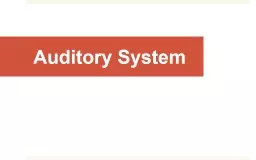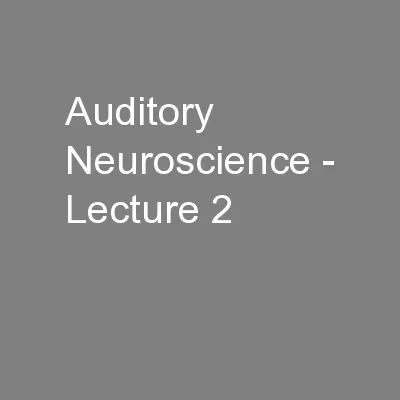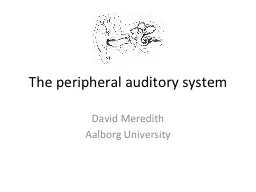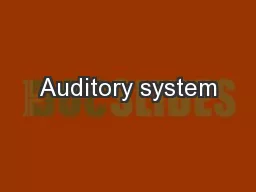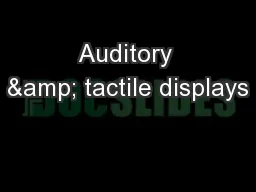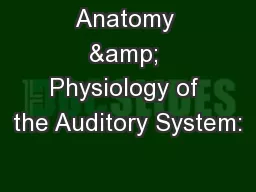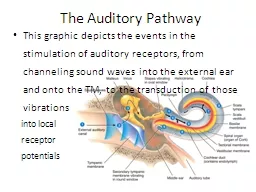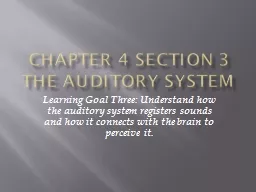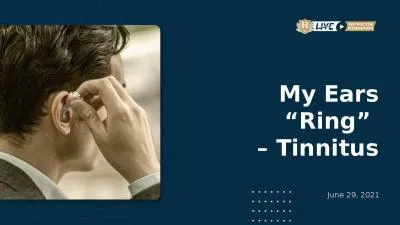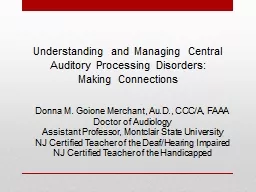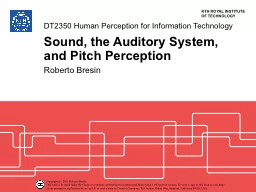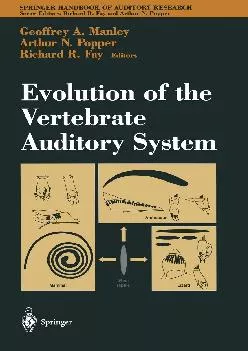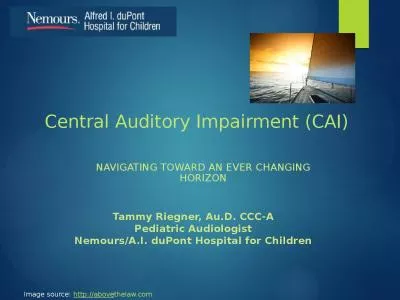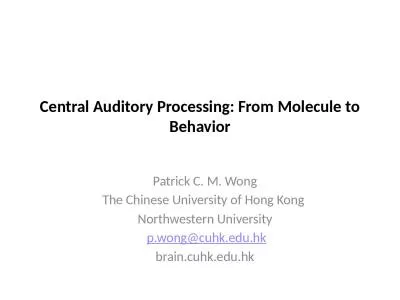PPT-Auditory System Objectives
Author : yoshiko-marsland | Published Date : 2020-04-02
Review the anatomy of ears Correctly order the steps of inner ear response Explain the brain mechanism for sound localization Draw the central auditory pathway Understand
Presentation Embed Code
Download Presentation
Download Presentation The PPT/PDF document " Auditory System Objectives" is the property of its rightful owner. Permission is granted to download and print the materials on this website for personal, non-commercial use only, and to display it on your personal computer provided you do not modify the materials and that you retain all copyright notices contained in the materials. By downloading content from our website, you accept the terms of this agreement.
Auditory System Objectives: Transcript
Download Rules Of Document
" Auditory System Objectives"The content belongs to its owner. You may download and print it for personal use, without modification, and keep all copyright notices. By downloading, you agree to these terms.
Related Documents

